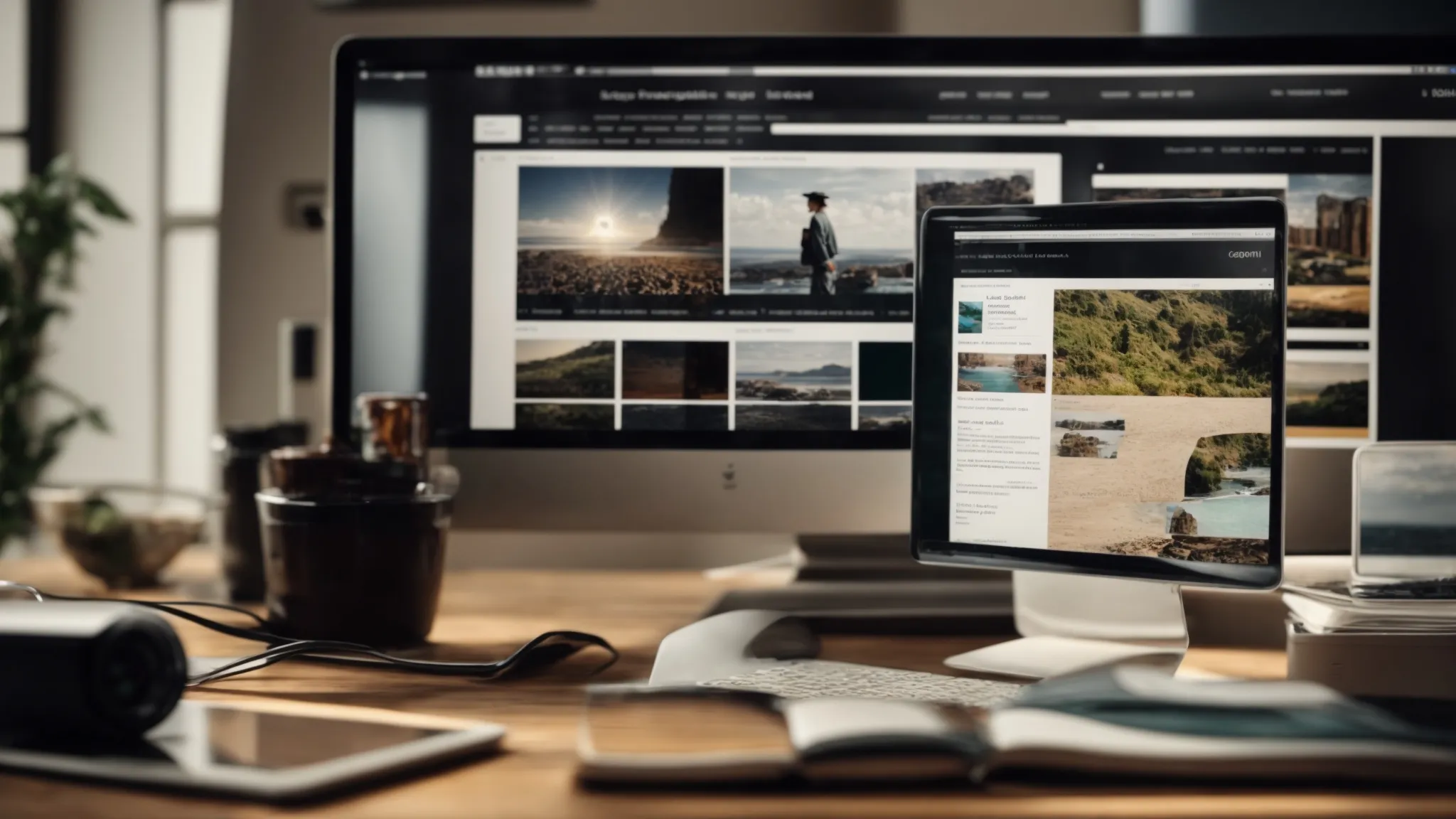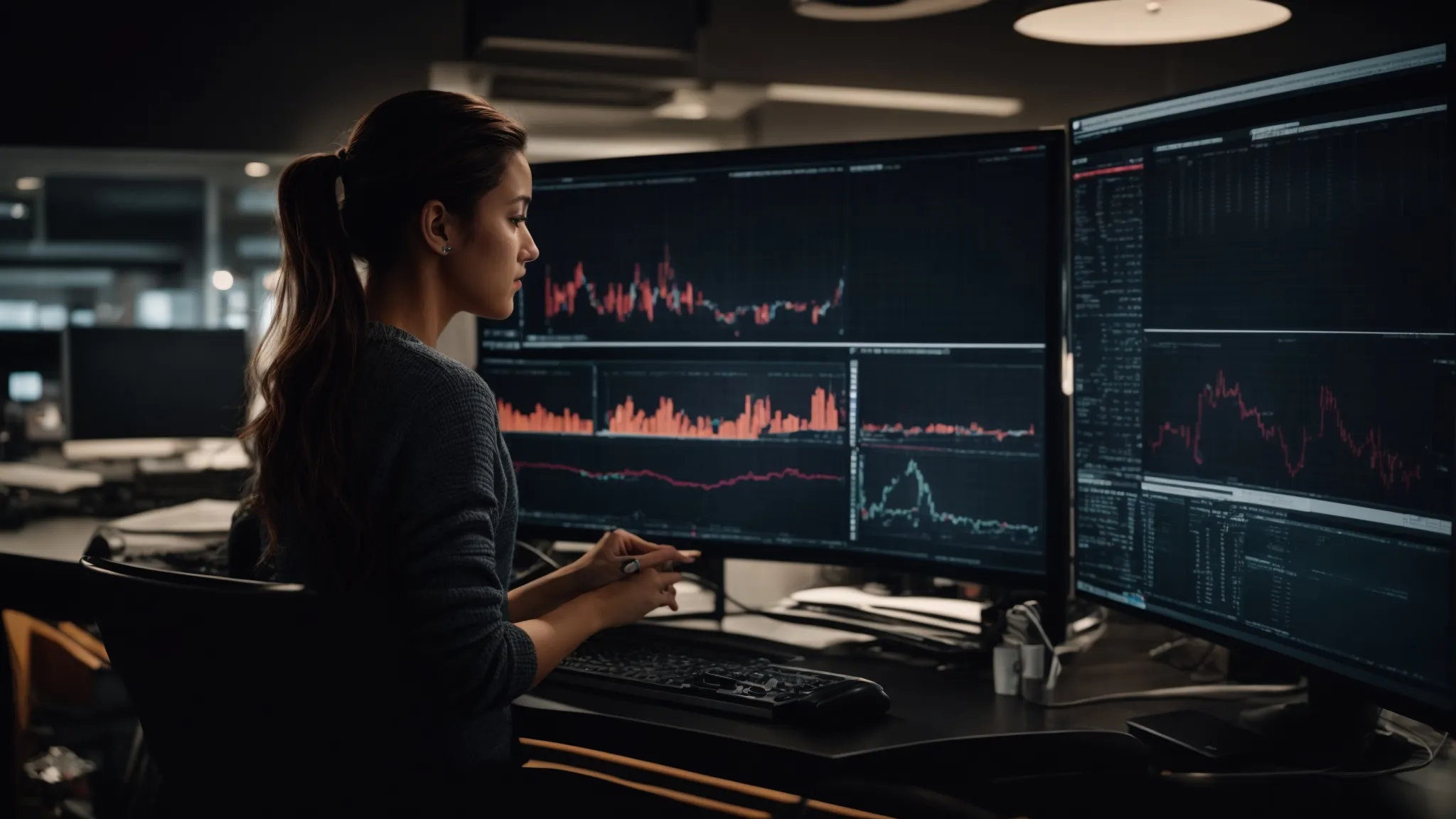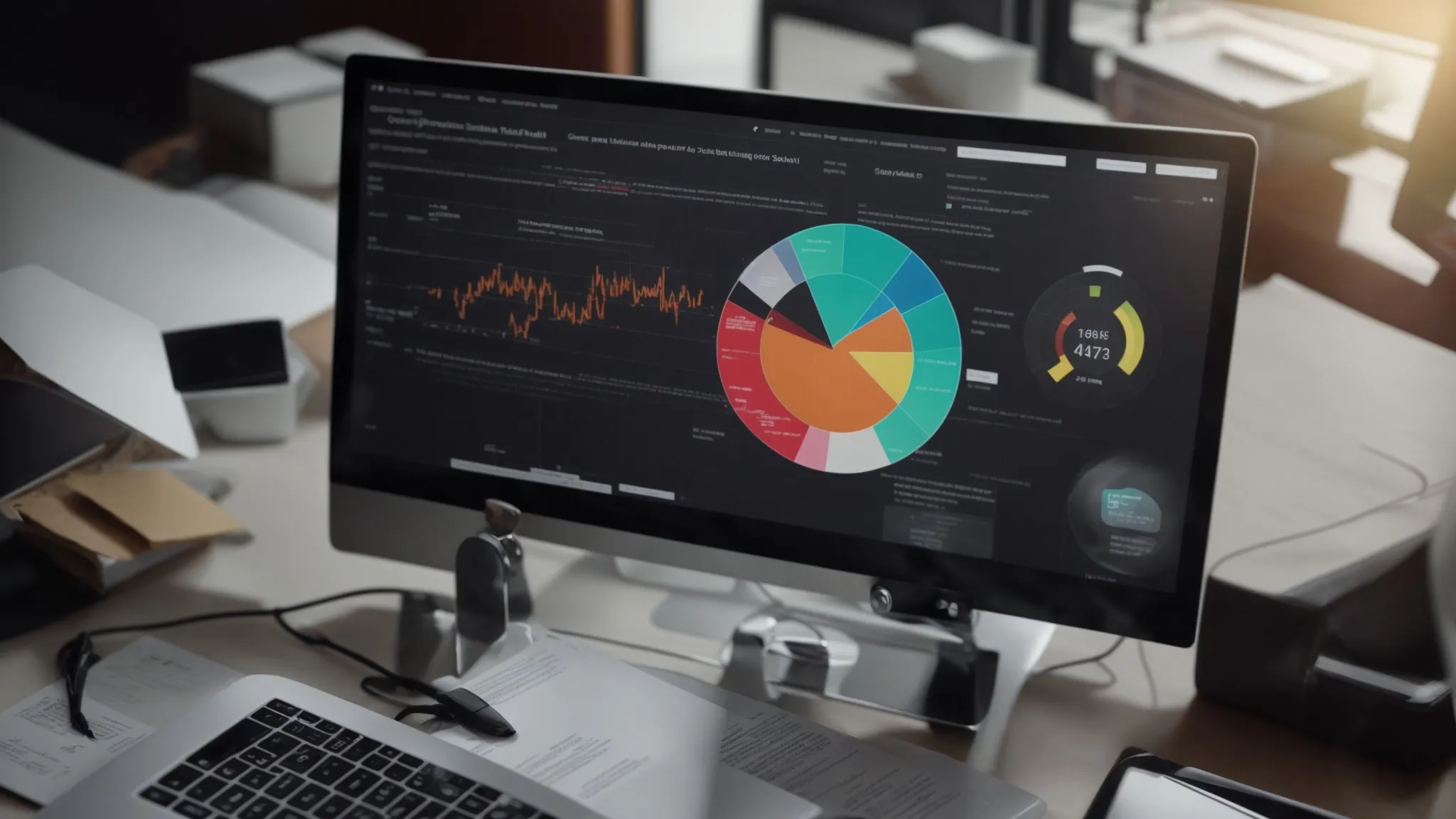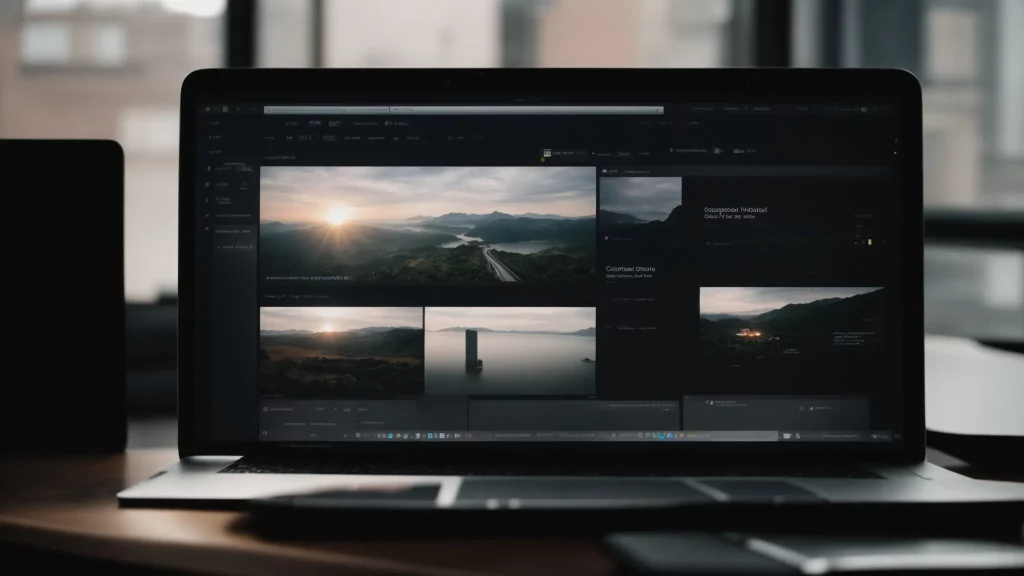Maximizing SEO with Alt Attributes: Guidelines for Effective Optimization
In the complex world of Search Engine Optimization (SEO), alt attributes serve as the guiding light for search engines, illuminating the path to a website's content through the dense fog of the internet.
These brief yet potent pieces of text hold the power to elevate a site's visibility on the digital landscape, making them indispensable tools in the arsenal of any digital marketer.
As Local Blitz has demonstrated, optimizing alt attributes is not just about adhering to best practices; it's about weaving keywords into the fabric of your site's imagery to enhance user experience and search engine rankings.
This article explores the multifaceted role of alt attributes in SEO and unravels the techniques for harnessing their potential to the fullest.
Keep reading to embark on a journey through the art and science of alt attribute optimization.
Key Takeaways
- Alt text attributes enhance both SEO performance and website accessibility, creating an inclusive online environment
- Effective alt text requires a balance between relevance, descriptive richness, and strategic keyword inclusion
- Regular audits of alt attributes can uncover optimization opportunities, improving a website's SEO footprint
- Integrating alt text with overall content and link-building strategies amplifies SEO impact
- Adapting alt text for responsive design is essential for maintaining user engagement and SEO relevancy across devices
Understanding the Role of Alt Attributes in SEO

Alt attributes, often seen as the unsung heroes of search engine optimization, play a pivotal role beyond their modest facade.
Imagine them as the bridge connecting the visual world of graphics with the textual realm of search engine algorithms.
By enhancing image discoverability, they propel images to the forefront of Google search and weave them seamlessly into the fabric of on-page SEO strategies.
Beyond the mechanics of search engines, alt attributes extend a hand of inclusivity to users, ensuring that the digital experience is accessible to all, including those employing assistive technology.
Thus, they stand at the crossroads of technology and accessibility, marrying the art of visibility on the web with the noble cause of user accessibility.
Enhancing Image Discoverability
Alt attributes serve as navigational beacons in the vast ocean of digital content, guiding search engines through waves of images toward a specific destination. By embedding relevant keywords within these attributes, images transcend their silent existence, speaking volumes to algorithms and enhancing their presence in the visual search landscape. It’s a dance of precision, where the right words elevate images from the depths of obscurity to the spotlight of Google search results, making them pivotal players in the symphony of search engine optimization.
Supporting on-Page SEO Strategies
Just as roots are to a tree, so are alt attributes to the health and flourishing of on-page SEO strategies. They bolster the relevancy of a webpage by ensuring images are properly indexed and understood by search engines. They also contribute to reducing bounce rates by enhancing the overall user experience. This symbiosis nurtures a fertile ground from which the seeds of organic search results can sprout:
| Element | Function | Impact on SEO |
|---|---|---|
| Alt Attributes | Describing Images | Enhances Visibility |
| User Experience | Bolstering Engagement | Reduces Bounce Rate |
| Organic Search Results | Growing Visibility | Increases Traffic |
Contributing to User Accessibility
In digital navigation, alt attributes serve as a compass guiding users with visual impairments through a landscape often designed for the sighted. By offering a textual descriptor of images, these attributes facilitate an understanding of web content that would otherwise remain inaccessible:
- They bridge the gap between visual content and users relying on screen readers, enabling a richer, more inclusive web experience.
- By adhering to the principles of the Web Accessibility Initiative, alt attributes exemplify the union of technology with empathy, ensuring no user is left behind in the digital age.
- Their presence underscores a commitment to inclusivity, aligning brand ethos with actions that speak volumes to users and search engines.
The Importance of Alt Text in Search Engine Rankings

In the labyrinth of digital marketing, alt attributes emerge as crucial signposts directing the flow of search engine traffic.
Their influence extends beyond mere decoration, which is pivotal in the strategic game of image ranking.
Within this realm, Google's algorithm scrutinizes alt text as a key element, discerning the relevance and context of images, thereby determining their rightful position in the vast gallery of image search results.
This scrutiny reveals the dual role of alt text: to enhance the accessibility of content and act as a silent whisper in the ear of search algorithms, significantly impacting how images are indexed and displayed.
Understanding alt text's nuanced contribution to user experience and Google's ranking mechanisms unfolds a narrative where every word counts, guiding a website's visual content to prominence in the search engine results page.
How Alt Text Affects Image Ranking
In the intricate ballet of search engine rankings, alt text wields its power subtly yet significantly, impacting where images land in the vast expanse of search results. This textual conductor directs the search engine's attention, orchestrating a symphony of relevance and context that determines an image's visibility online:
| Component | Role | Impact |
|---|---|---|
| Alt Text | Guiding Search Engines | Enhanced Image Ranking |
| Image Content | Providing Context | Increased Relevance |
| User Engagement | Encouraging Interactions | Improved Visibility |
Alt Text as a Google Ranking Factor
In Google's algorithmic code, alt text is not just decoration; it's a critical factor in deciphering an image's content and context. Such textual interpretations serve as a linchpin for Google's ranking algorithm, bestowing upon alt text the power to whisper directly into the ears of this digital titan, nudging images toward their deserved spotlight on the search engine results page.
- Alt text imbues images with linguistic identity, enabling search engines to grasp the content's essence.
- It acts as a catalyst for enhancing the image's relevance and context, thereby improving its positioning in search results.
- Alt text elevates image visibility through strategic formulation, directly influencing a website's search engine ranking.
Impact of Alt Text on Image Search Results
The digital realm operates on the principle that visibility is equivalent to existence. In this context, alt text emerges as a beacon of light for images trapped in the shadowy recesses of the internet. By skillfully leveraging alt attributes, businesses dramatically increase the chances of their images surfacing in Google's visual search results, transforming once invisible assets into powerful conduits of traffic and engagement. It ensures that every image, from the humble logo to the most intricate infographic, plays a decisive role in enhancing a website's visibility across the vast expanses of the internet landscape.
Crafting Effective Alt Text for SEO Optimization

Embarking on crafting compelling alt text for SEO optimization requires a delicate balance—a harmonious blend of art and science.
At the core of this endeavor lies the strategic identification of target keywords, ensuring each phrase enriches the image's descriptive narrative without redundancy.
It is essential to sculpt alt attributes that are both relevant and descriptively rich, painting a vivid picture for search engines while providing value to the user.
However, one must tread carefully, as the temptation to sprinkle excessive keywords can lead to the murky waters of keyword stuffing, inadvertently diluting the potency of the message.
Navigating these principles effectively carves a path toward enhanced visibility and user engagement, solidifying the alt attribute's role as a cornerstone in the edifice of search engine optimization.
Identifying Target Keywords for Alt Text
Embarking on the quest for the perfect alt text begins with the art of keyword research. This critical step unveils the terms your audience navigates by. This detective work involves analyzing the subject matter of the image and the search behavior of your target demographic, aiming to pinpoint the phrases that strike a chord of relevance. The goal is to sculpt alt text that resonates with the user and search engine, threading the needle between being descriptive and staying strategically focused on terms likely to propel visibility in search engine results.
Keeping Alt Text Relevant and Descriptive
In the intricate web of SEO, keeping alt text relevant and descriptive is akin to painting with words, where each stroke illuminates the essence of the image it represents. This delicate narrative dance ensures that search engines and users can grasp the image's context at a glance, enriching the web content's tapestry and bolstering the website's standing in the digital ecosystem.
Avoiding Keyword Stuffing in Alt Attributes
In the orchestra of SEO optimization, maintaining the purity of alt attributes involves resisting the siren call of keyword stuffing. This practice muddies the clarity and relevance of descriptions. Striking a balance, where each word serves its purpose without overcrowding, preserves the integrity of the alt text. It's critical to remember that while keywords play a vital role in search engine discovery, their overuse within alt attributes can detract from the overall harmony of the content, leading to a discordant user and search engine experience.
- Begin with comprehensive keyword research to identify terms that align with the image and content context.
- Integrate keywords into alt text in a manner that adds value and enhances understanding for both users and search engines.
- Conduct regular website content audits to ensure consistency and accuracy in using alt attributes, avoiding the pitfall of stuffing.
Strategies for Leveraging Alt Attributes in Content

In the complex world of digital content, using alt attributes emerges as a powerful tool in the arsenal of search engine optimization techniques.
Navigating through the art of integrating alt text with an overall content strategy, one finds that the nexus of SEO efficacy and user experience is desirable and essential for digital success.
This section delves into the nuanced interplay between the strategic use of keywords within alt text and the imperative of maintaining an optimal user experience.
Moreover, it explores the tactical positioning of images—to enhance a website's SEO standings and champion the cause of accessibility.
When choreographed with precision, the dance between these elements can elevate a website's digital presence and ensure that it resonates with users and search engines.
Integrating Alt Text With Overall Content Strategy
Integrating alt text with an overall content strategy involves a nuanced marriage of creativity and analytics: weaving relevant keywords into a natural narrative that enhances the image's meaning while bolstering the webpage's SEO performance.This process heightens the content's discoverability through visual search and fortifies its accessibility, making it more inclusive for users navigating with assistive technology. Such a strategy ensures that every element on the page, from text to imagery, contributes harmoniously to the site's search engine ranking and user experience.
- Conduct an audit to identify images lacking alt text or employing generic descriptions, setting the stage for optimization.
- Analyze keyword performance and user behavior to select terms that enhance SEO and user comprehension.
- Update alt attributes to reflect these chosen keywords, ensuring they align with the image context and content strategy.
Balancing Keyword Use With User Experience
Achieving a harmonious balance between keyword utilization and user experience in alt attributes demands a nuanced understanding of SEO dynamics and human interaction with digital content. It necessitates crafting alt text that is simultaneously informative for search engines and engaging for users, ensuring that each word enriches the user's journey through the website without compromising the clarity and relevance demanded by search engine algorithms. This equilibrium is the cornerstone of an effective SEO strategy, fostering an environment where content is discoverable by search engines and accessible to all users, including those with disabilities.
Positioning Images Strategically for SEO and Accessibility
In the orchestrated tapestry of digital marketing, positioning images strategically transcends mere aesthetics, anchoring firmly in the realms of SEO supremacy and the noble pursuit of accessibility. A deftly positioned image, accompanied by meticulously crafted alt text, acts as a beacon for search engines, guiding them through the visual narratives of a webpage. Moreover, it ensures that the cyber terrain remains navigable for users reliant on assistive technologies, embodying the twin pillars of visibility and inclusivity:
- Optimize the placement of images near relevant textual content to underscore their importance to search engines and users alike.
- Employ responsive web design techniques to ensure images and their alt attributes adapt gracefully across devices, enhancing accessibility.
- Use high-contrast ratios for images to accommodate visually impaired users, reinforcing the commitment to a barrier-free web experience.
Best Practices for Writing Alt Text

Embracing the nuanced art of crafting alt text is a foundational pillar in the cathedral of search engine optimization.
It is a practice steeped in the dual objectives of enhancing accessibility while bolstering each image's SEO value.
This section unveils a trove of insights, from tips on forging informative and concise alt text that captivates algorithms and human curiosity to real-world examples that illustrate the transformative power of efficiently deployed alt attributes.
Moreover, it illuminates the common pitfalls in alt text composition, offering a roadmap to avoid them.
Together, these elements converge to sculpt alt text that is compliant with SEO best practices and enrich the tapestry of web content for a diverse audience.
Tips for Creating Informative and Concise Alt Text
When fashioning alt text, it becomes pivotal to tread the fine line between brevity and descriptiveness, ensuring each word serves the dual purpose of enlightening search engines while captivating users' interests. Alt attributes should encapsulate the essence of an image in a nutshell, utilizing targeted, succinct phrasing that enhances the narrative without veering into verbosity. This crafting strategy champions clarity, making visuals accessible and meaningful across the diverse spectrum of web navigators and digital crawlers.
Examples of Efficient Alt Text Usage
Local Blitz showcases the power of efficient alt text usage in digital marketing through their meticulously optimized web design projects. Employing describers that act as a bridge between the visual content and the textual narrative, they craft alt texts that are concise yet replete with information, enhancing both the SEO valor and user accessibility of their clients' websites. This practice elevates the website's standing in a sea of digital competition. It aligns with the noble cause of making the internet accessible to all, regardless of disability.
- An infographic on “The Evolution of Digital Marketing” labeled with alt text “Timeline infographic showing digital marketing evolution from email campaigns to AI-driven strategies” provides context and keyword richness.
- A logo image for a bakery website is coupled with the alt text “Local Blitz client Sweet Treats Bakery logo,” reinforcing brand visibility while informing the user and search engine about the image content.
- A screenshot of the Google Analytics dashboard with alt text “Google Analytics dashboard showing website traffic trends for Local Blitz client,” demonstrating how specific descriptions offer insight into image context, enhancing relevance in visual search results.
Common Pitfalls to Avoid in Alt Text Writing
In sculpting alt text, one must evade the trap of ambiguity and generic descriptors, which dilute the narrative and lead search engines and users astray. Overloading this HTML attribute with a barrage of keywords, a practice known as keyword stuffing, undermines the integrity of the content and can trigger penalties from search engines. Equally detrimental is neglecting the alt attribute altogether, a missed opportunity to enhance SEO and web accessibility, leaving a chasm where a bridge between visual content and textual interpretation should exist.
Optimizing Alt Text for Mobile and Responsive Design

In the ever-evolving landscape of digital content consumption, the agility of alt text to morph in harmony with the varied screen sizes and resolutions stands as a critical factor in the quest for SEO mastery.
The move toward a more mobile-centric world underscores the imperative for alt text to be descriptive and dynamic, accommodating the fluid nature of responsive web design.
This section delves deep into strategies for ensuring that alt text retains its relevance and effectiveness across an array of devices and adapts gracefully to the changing dimensions of images. This guarantees an uninterrupted and inclusive user experience while bolstering a website's visibility in the competitive digital arena.
Ensuring Alt Text Compatibility Across Devices
In the digital tapestry where mobile devices weave an ever-growing portion of web traffic, ensuring alt text compatibility across various screens has become a cornerstone of SEO and usability. This pivotal strategy enables images to maintain their communicative power and relevance, regardless of the device used to access the web, ensuring a seamless and inclusive user experience that aligns with Google's mobile-first indexing policies. It's a testament to the flexibility and foresight needed in modern web design, where the agility of alt attributes plays a critical role in the quest for digital visibility and accessibility.
Adapting Alt Text for Variable Image Sizes
In the dynamic sphere of web design, adapting alt text to accommodate variable image sizes is a pivotal consideration for maintaining SEO relevancy across devices. This adaptation ensures that as images shift and resize to fit different screens, their alt text continues to provide relevant, concise descriptions, thereby preserving the integrity of the user's digital experience and the website's search engine visibility. It's a nuanced balance that underscores the importance of responsive design in the modern internet landscape.
Tools and Techniques for Auditing Alt Attributes

The importance of conducting thorough audits cannot be overstated in the quest to harness the full potential of alt attributes for search engine optimization.
Delving into the realm of evaluating alt text effectiveness opens a panorama of strategies, where the precision of SEO tools collides with the discernment of manual examination.
This optimization stage necessitates a careful balance between automated audits, which offer a broad overview of a website's compliance with best practices, and the meticulous nature of manual reviews, uncovering nuanced issues that automated tools might overlook.
The subsequent journey involves rectifying common pitfalls identified during audits, a step crucial for elevating a website's SEO stature.
Together, these approaches forge a pathway to enhancing web content's visibility and accessibility, ensuring alt attributes contribute significantly to a website's search engine rankings.
Using SEO Tools to Evaluate Alt Text Effectiveness
In the digital age, where minutiae can make or break a website's visibility, SEO tools emerge as indispensable allies in evaluating the effectiveness of alt text. These technological scouts navigate the intricate web of a site's structure, pinpointing areas where alt attributes bolster the SEO campaign or fall short of their potential. Local Blitz and other astute digital marketers adeptly refine and enhance alt texts by harnessing the insight provided, ensuring each image description is a silent yet powerful beacon to search engines.
Manual vs. Automated Audits of Alt Attributes
In optimizing alt attributes for heightened SEO, distinguishing between manual and automated audits reveals the depth of their respective advantages. Computerized audits, executed through sophisticated SEO tools, efficiently map out a website's alt text landscape, swiftly identifying gaps and over-optimizations at scale. Conversely, manual audits bring a nuanced perspective, allowing for a deeper dive into alt text's contextual relevance and descriptive quality, unearthing subtleties often missed by their automated counterparts.
Correcting Common Issues Found in Alt Text Audits
In the meticulous pursuit of refining alt attributes, unearthing deficiencies through audits paves the way for strategic enhancement. Correction often involves recalibrating overly generic descriptions or rectifying missing alt texts, fostering a more meaningful dialogue between images and search engine crawlers. This process clarifies the narrative for visually impaired users. It polishes the website's SEO, ensuring each visual element contributes effectively to the digital tapestry.
Alt Attributes and Web Accessibility: Complementary Goals

In the digital age, where the internet serves as both a marketplace and a meeting ground, alt attributes bridge the gap between search engine optimization (SEO) and web accessibility, fostering an inclusive online environment.
These seemingly simple strips of text can unlock the visual web for visually impaired users, ensuring that everyone has equal access to information and services regardless of ability.
Beyond mere compliance, the thoughtful integration of alt text embodies a commitment to legal and ethical standards, harmonizing SEO ambitions with the imperatives of accessibility.
As businesses strive to enhance their digital footprint, aligning SEO techniques with accessibility standards emerges not just as a best practice but as a moral directive, ensuring the web remains a versatile, user-centric space.
How Alt Text Improves Accessibility for Visually Impaired Users
Alt text serves as a guiding light for visually impaired users, narrating the unseen image story through screen readers, thus transforming a visual medium into an auditory experience. This auditory landscape, crafted through carefully descriptive alt attributes, ensures that every user has the opportunity to perceive and understand web content in its entirety. It's a bridge across the digital divide, enabling access to the rich tapestry of the internet's visual content, ensuring the web remains an inclusive realm for all to explore.
Legal and Ethical Considerations for Alt Text Use
In the digital landscape, visibility and accessibility intertwine, and using alt attributes carries profound legal and ethical implications. Adhering to web accessibility standards, including the Web Content Accessibility Guidelines (WCAG) established by the World Wide Web Consortium, is a best practice and a regulatory mandate in many jurisdictions. Furthermore, crafting alt text that genuinely reflects and describes image content demonstrates a commitment to ethical principles, ensuring the digital world is equitable, facilitating access for users with disabilities, and reinforcing the brand's integrity. Local Blitz, as a pioneer in this arena, recognizes the importance of integrating these considerations into their SEO and web development strategies, setting a benchmark for responsible digital citizenship.
Aligning SEO Goals With Accessibility Standards
Marrying SEO goals with accessibility standards requires a strategic alignment that prioritizes user experience while optimizing for search engines. This harmonization ensures that web content is visible and accessible to all users, regardless of their physical abilities. Local Blitz exemplifies this approach by integrating alt attributes that enhance SEO performance and web accessibility. This demonstrates that effective optimization transcends mere search rankings to embrace a broader, more inclusive digital landscape.
Advanced Optimization: Integrating Alt Text With Other SEO Elements

In the intricate dance of search engine optimization, alt attributes play a pivotal role, extending their reach far beyond mere image descriptions to interact with other SEO elements in a symphony of strategic alignment.
This advanced optimization level explores the union between alt text, the carefully chosen filenames of images, and the surrounding content that weaves a cohesive narrative for search engines to interpret.
Furthermore, incorporating alt text in link-building strategies unveils an innovative avenue for enhancing the relevance and authority of links, enriching the SEO ecosystem.
Additionally, the impact of alt text on a website's page load speed and overall performance is scrutinized, revealing its subtle yet significant influence on user experience and search engine rankings.
This multifaceted approach ensures that every component of a website's design and content strategy harmoniously contributes to its SEO success and digital accessibility.
Synergy Between Alt Text, Image File Names, and Surrounding Content
In the grand theater of search engine optimization, the synergy between alt text, image filenames, and surrounding content plays a leading role, orchestrating an intricate ballet that captures the attention of search engines. This harmonious interaction ensures that each element enhances the others, amplifying the overall SEO impact of web content. The alt text describes the visual aspect, the filename offers a clue to the content's context, and the surrounding text provides the broader narrative; together, they weave a cohesive story that search engines find irresistible.
| SEO Element | Role | Impact on SEO |
|---|---|---|
| Alt Text | Describes visual content | Improves image's search visibility |
| Image File Names | Offers contextual cues | Enhances content relevance |
| Surrounding Content | Provides broader narrative | Strengthens topical authority |
Leveraging Alt Text in Link Building Strategies
In the sophisticated realm of SEO, integrating alt text with link-building strategies emerges as an innovative methodology to amplify the relevance and authority of web connections. This technique enriches the anchor text with descriptive power, translating into a stronger signal to search engines and endows links with enhanced context, fostering more meaningful interactions between web content and its consumers:
- Embedding strategic keywords within alt attributes of linked images to bolster the relevance of anchor texts.
- Utilizing descriptive and relevant alt text in images that serve as hyperlinks enhances those links' usability and SEO value.
- Ensuring the consistency between the content of the landing page and the alt text of the image link to maintain coherence and relevance in the eyes of search algorithms.
Exploring the Impact of Alt Text on Page Load Speed and Performance
In the sophisticated dance of SEO, alt attributes play a nuanced role beyond accessibility and image indexing, subtly influencing page load speed and overall website performance. Well-crafted alt text, while lightweight, aids in rendering images more intelligible to search engines without burdening the server, maintaining an optimal balance between performance and SEO. This delicate interplay exemplifies the art of digital optimization, where every element is meticulously aligned to enhance user experience while promoting visibility in the digital realm.
Conclusion
Maximizing SEO with alt attributes is crucial for effective website optimization. It strikes a balance between enhancing accessibility and improving search engine rankings.
Crafting descriptive, keyword-rich alt text ensures images are visible to search engines and accessible to users, including those with visual impairments.
This strategic integration of alt attributes with overall content strategy elevates a site's SEO performance and supports a more inclusive digital experience.
Businesses can significantly boost their web presence by avoiding common pitfalls like keyword stuffing and ensuring alt text relevance across devices
Incorporating these guidelines ensures that each visual element contributes positively to a site's digital footprint, marrying SEO goals with the noble aim of accessibility.

